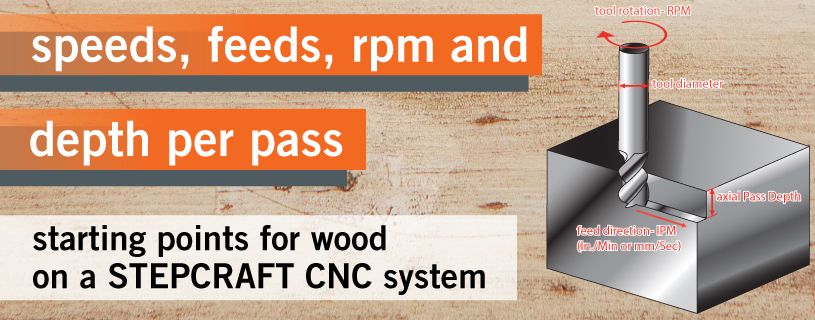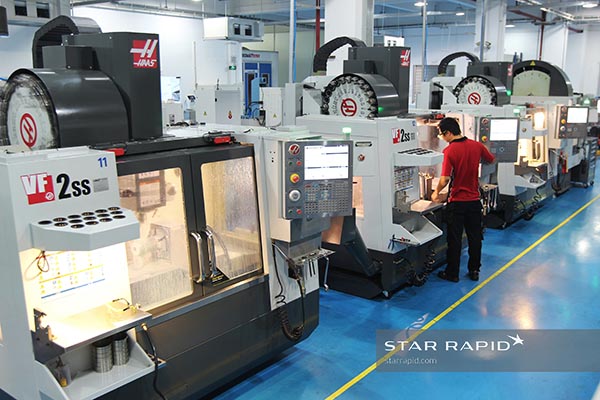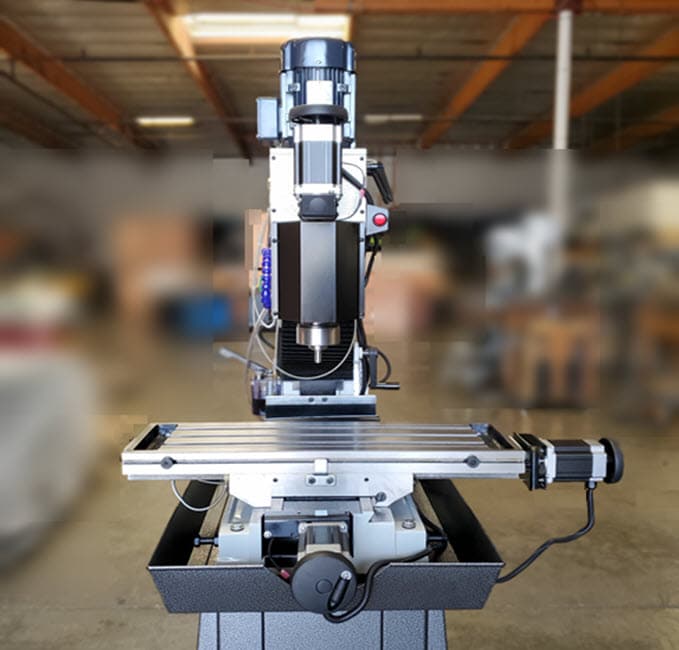Table of Contents
If you’re interested in CNC milling, you may have wondered just how deep a 1/8 CNC mill can work. This is an important question, as it can affect the design and functionality of your projects. In this article, we’ll explore the capabilities of a 1/8 CNC mill and provide some tips on how to get the most out of your machine.
CNC milling is a fascinating technology that has revolutionized the manufacturing industry. With the ability to create intricate designs and precise cuts, CNC mills are a valuable tool for makers of all kinds. In this article, we’ll delve into the world of 1/8 CNC mills and explore their capabilities, limitations, and best practices for use. So, let’s get started!
How Deep Can 1/8 CNC Mill Work?
The depth of a 1/8 CNC mill depends on various factors such as the material, cutting tool, and the milling machine’s capabilities. However, in general, a 1/8 CNC mill can work up to a depth of 1/8 inch or 3.175mm. It’s essential to note that deeper cuts may cause the tool to wear out faster and affect the quality of the final product. Therefore, it’s crucial to adjust the mill’s speed and cutting parameters to ensure precise and efficient milling.
How Deep Can 1/8 CNC Mill Work?
When it comes to CNC milling, one of the most critical factors that determine the quality of the final product is the depth of the cut. The depth of cut is the distance between the top surface of the material and the deepest point of the cut. In this article, we will discuss how deep a 1/8 CNC mill can work and how it affects the quality of the final product.
Understanding the Basics of CNC Milling
CNC milling is a popular manufacturing process that involves the use of computer-controlled machines to remove material from a workpiece. The process requires precision, accuracy, and speed to produce high-quality products. The depth of cut is an essential parameter that affects the overall quality of the product.
The depth of cut is the distance between the top surface of the material and the deepest point of the cut. It determines how much material the CNC mill can remove in a single pass. The depth of cut is influenced by several factors, including the size of the cutting tool, the material being machined, and the speed and feed rate of the machine.
What is a 1/8 CNC Mill?
A 1/8 CNC mill is a machine tool used in CNC milling. It is a small but powerful machine that is used to cut and shape various materials, including wood, plastic, and metal. The size of the cutting tool used in a 1/8 CNC mill is 1/8 inch in diameter.
The 1/8 CNC mill is commonly used in hobbyist and small-scale manufacturing operations because of its size and affordability. It provides a high level of precision and accuracy, making it ideal for creating small and intricate parts.
The Maximum Depth of Cut for a 1/8 CNC Mill
The maximum depth of cut for a 1/8 CNC mill is determined by several factors, including the material being machined, the size of the cutting tool, and the speed and feed rate of the machine. In general, the maximum depth of cut for a 1/8 CNC mill is around 1/8 inch or 3.175mm.
It is essential to note that cutting a material deeper than the recommended maximum depth of cut can result in poor quality and inaccurate cuts. It can also cause excessive wear and tear on the cutting tool, reducing its lifespan.
The Benefits of Using a 1/8 CNC Mill
Using a 1/8 CNC mill has several benefits, including:
1. Precision and accuracy: The 1/8 CNC mill provides a high level of precision and accuracy, making it ideal for creating small and intricate parts.
2. Versatility: The 1/8 CNC mill can cut and shape various materials, including wood, plastic, and metal, making it a versatile machine.
3. Affordability: The 1/8 CNC mill is an affordable machine that is ideal for hobbyists and small-scale manufacturing operations.
The Limitations of a 1/8 CNC Mill
While the 1/8 CNC mill is an excellent machine for creating small and intricate parts, it has some limitations, including:
1. Maximum depth of cut: The 1/8 CNC mill can only cut to a maximum depth of around 1/8 inch or 3.175mm.
2. Size limitations: The 1/8 CNC mill is a small machine that is not suitable for large-scale manufacturing operations.
3. Speed limitations: The 1/8 CNC mill may not be as fast as larger machines, which can affect productivity.
How to Optimize the Depth of Cut for a 1/8 CNC Mill
To optimize the depth of cut for a 1/8 CNC mill, you need to consider several factors, including the material being machined, the size of the cutting tool, and the speed and feed rate of the machine. Here are some tips to help you optimize the depth of cut:
1. Use the right cutting tool for the material being machined.
2. Adjust the speed and feed rate of the machine based on the material being machined.
3. Use the appropriate cutting parameters for the material being machined.
The Bottom Line
In conclusion, the maximum depth of cut for a 1/8 CNC mill is around 1/8 inch or 3.175mm. It is essential to optimize the depth of cut based on the material being machined, the size of the cutting tool, and the speed and feed rate of the machine to achieve high-quality and accurate cuts. While the 1/8 CNC mill has some limitations, it is an excellent machine for creating small and intricate parts, making it ideal for hobbyists and small-scale manufacturing operations.
Frequently Asked Questions
Here are some frequently asked questions about the maximum depth that a 1/8 CNC mill can work.
How deep can a 1/8 CNC mill cut in a single pass?
The depth that a 1/8 CNC mill can cut in a single pass depends on a variety of factors, including the material being cut, the size of the end mill, and the spindle speed. In general, a 1/8 CNC mill can cut up to 1/8 inch deep in a single pass through materials like wood or plastic. However, when cutting harder materials like metal, it’s usually recommended to take multiple passes at shallower depths to prevent damaging the end mill.
It’s also important to note that the maximum depth of a 1/8 CNC mill can vary depending on the specific machine and tooling being used, so it’s always a good idea to consult the manufacturer’s specifications and recommendations before attempting any cutting operations.
What is the maximum depth of cut for a 1/8 CNC mill?
The maximum depth of cut for a 1/8 CNC mill depends on a variety of factors, including the material being cut, the size and shape of the end mill, and the spindle speed. In general, a 1/8 CNC mill can cut up to 1/4 inch deep in softer materials like wood or plastic, but only up to 1/16 inch deep in harder materials like metal.
It’s important to note that attempting to make cuts deeper than the recommended maximum can lead to tool breakage or other damage to the machine, so it’s always best to err on the side of caution and take multiple passes at shallower depths when cutting harder materials.
Can a 1/8 CNC mill be used for drilling deep holes?
While a 1/8 CNC mill is primarily designed for cutting and milling operations, it can also be used for drilling deeper holes depending on the length and diameter of the drill bit being used. In general, a 1/8 inch drill bit can drill a hole up to 1/4 inch deep in softer materials like wood or plastic, but only up to 1/16 inch deep in harder materials like metal.
However, it’s important to note that using a 1/8 CNC mill for drilling deep holes can be more challenging than using a dedicated drill press, since the machine’s cutting forces can cause the drill bit to wander or deflect off course. As with any cutting operation, it’s important to use the proper tooling and cutting parameters for the job at hand.
What types of materials can a 1/8 CNC mill cut?
A 1/8 CNC mill can cut a variety of materials, including wood, plastic, soft metals like aluminum, and even some harder metals like brass or copper. However, the specific capabilities of the machine will depend on a variety of factors, including the size and shape of the end mill being used, the spindle speed, and the rigidity of the machine itself.
It’s always a good idea to consult the manufacturer’s specifications and recommendations before attempting to cut any new materials, as certain materials may require specialized tooling or cutting parameters to achieve optimal results.
What are some tips for achieving deep cuts with a 1/8 CNC mill?
Achieving deep cuts with a 1/8 CNC mill requires careful attention to a variety of factors, including the material being cut, the size and shape of the end mill, and the spindle speed. Here are a few tips to keep in mind:
First, make sure to take multiple passes at shallower depths when cutting harder materials like metal, rather than attempting to make a single deep cut. This will help prevent tool breakage and other damage to the machine.
Second, make sure to use the appropriate tooling for the job at hand, including end mills with a large enough diameter to handle the depth of cut required. Third, adjust the spindle speed and feed rate to ensure that the machine is cutting at the optimal rate for the material being cut. Finally, make sure to monitor the cutting process closely and make adjustments as needed to ensure a clean and accurate cut.
In conclusion, the depth that a 1/8 CNC mill can work depends on several factors. The type of material being machined, the tool diameter, and the machine’s spindle speed all play a role in determining the maximum depth achievable.
However, with the right settings and tooling, a 1/8 CNC mill can produce precise and intricate cuts up to several millimeters deep. This makes it an ideal tool for creating small, detailed parts and components for a variety of industries.
Overall, while a 1/8 CNC mill may not be capable of machining as deeply as larger machines, it still offers a high level of accuracy and precision for small-scale projects. With the right skills and knowledge, it can be a valuable addition to any workshop or manufacturing facility.
Request a quote today!
[contact-form-7 id="1578" title="Contact form"]
Please compress the file into a ZIP or RAR file before uploading. Alternatively, send through your RFQ by email.
enquires@unitymanufacture.com





